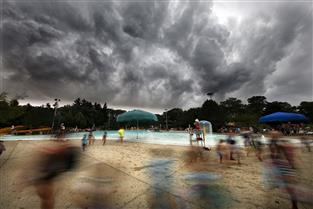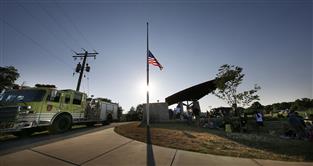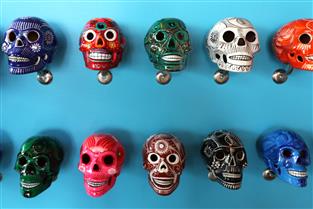City Fire staff to offer CPR/AED training for residents
Two sessions have been scheduled
There's a comparison made during paramedic training classes that sticks in Wauwatosa Fire Lt. Brian O'Day's mind.
Milwaukee's paramedics are stationed in many neighborhood locations, able to respond quickly to those in need. Seattle's paramedics are more spread out, taking longer to get to their patients.
But there are more people in Seattle who know how to perform CPR, and even with the longer paramedic response time, survivability rates there are the same as in Milwaukee, O'Day said.
It points to the power of CPR, and the reason the Wauwatosa Fire Department has decided to offer CPR and AED training to its residents, he said.
"I'm hoping parents are interested," he said. "Not only does it cover CPR, but choking for children and infants. If a child goes into cardiac arrest, it's not a cardiac problem - it's a breathing problem. Being able to perform rescue breathing on a child can have a huge impact on their survivability."
The four-hour American Heart Association class will be taught by Wauwatosa emergency medical responders. It will cover CPR, the use of an automated external defibrillator and issues related to choking and rescue breathing.
AEDs are becoming more prevalent in the community, with a number of businesses, as well as the library and City Hall, having invested in the equipment.
An AED - a device that allows almost anyone to determine if a heart needs to be shocked, and to then deliver that shock - was used on a man who went into cardiac arrest at the YMCA in Wauwatosa this summer, O'Day said. By the time paramedics arrived, he was alert and talking.
"It's becoming more common across the country, because it is more common to find these AEDs available," O'Day said. "Not only are they surviving, but surviving without any brain damage or other negative effects (in some cases)."
That's important to note, because the more time that passes between cardiac arrest and the time a heart beat is restored, the more damage that is done.
"Every minute, your chance of survival decreases 10 percent," O'Day said. "If someone is down 10 minutes, it's very unlikely they will survive."
While AEDs are powerful tools, CPR is valuable as well. It's a way to keep the blood circulating and delivering oxygen throughout the body until the heart can be started again.
"I wish every kid that came out of high school knew how to do CPR," O'Day said.
Studies have shown that people sometimes don't perform CPR because they are afraid they will do it wrong and cause more harm. That's a baseless fear, O'Day said.
"Even just compressions can increase survivability," he said. "It used to be a myth that you'd damage a heart by doing chest compressions - it's not true."
The Fire Department hopes the inaugural class will be well attended, and word of mouth will fuel future classes. It also is considering doing some demonstrations at the farmers market or Tosa Fest to help reach more people, O'Day said.
CPR training
WHAT: American Heart Association CPR class
WHERE:Fire Station No. 1, 1601 Underwood Ave., Wauwatosa
WHEN:6 to 10 p.m. Jan. 16; a second class will be held from 9 a.m. to 1 p.m. Feb. 16; participants need attend only one session.
COST:$20
REGISTER: Call Brian O'Day at (414) 380-5156.
More from News and Features
- Anodyne Coffee plans to open location in Wauwatosa Village
- Wauwatosa Meetings: Aug. 4
- Video: Wauwatosa girl's curbside ice cream stand raises money for the hungry
- Wauwatosa News and Notes: Hands-only CPR training offered; Firefly Art Fair is Aug. 6-7
- Wauwatosa Ask Now: Why are there barriers and fencing along the North Avenue bridges over the Menomonee River?
- Mystery Photo Contest: July 28
- Wauwatosa gears up for National Night Out event, this year at the zoo
- Election 2016: Wisconsin's 4th District candidates weigh in
- Wauwatosa's Luther Manor residents share smiles through flower delivery
- Wauwatosa Police Report: July 17-23














